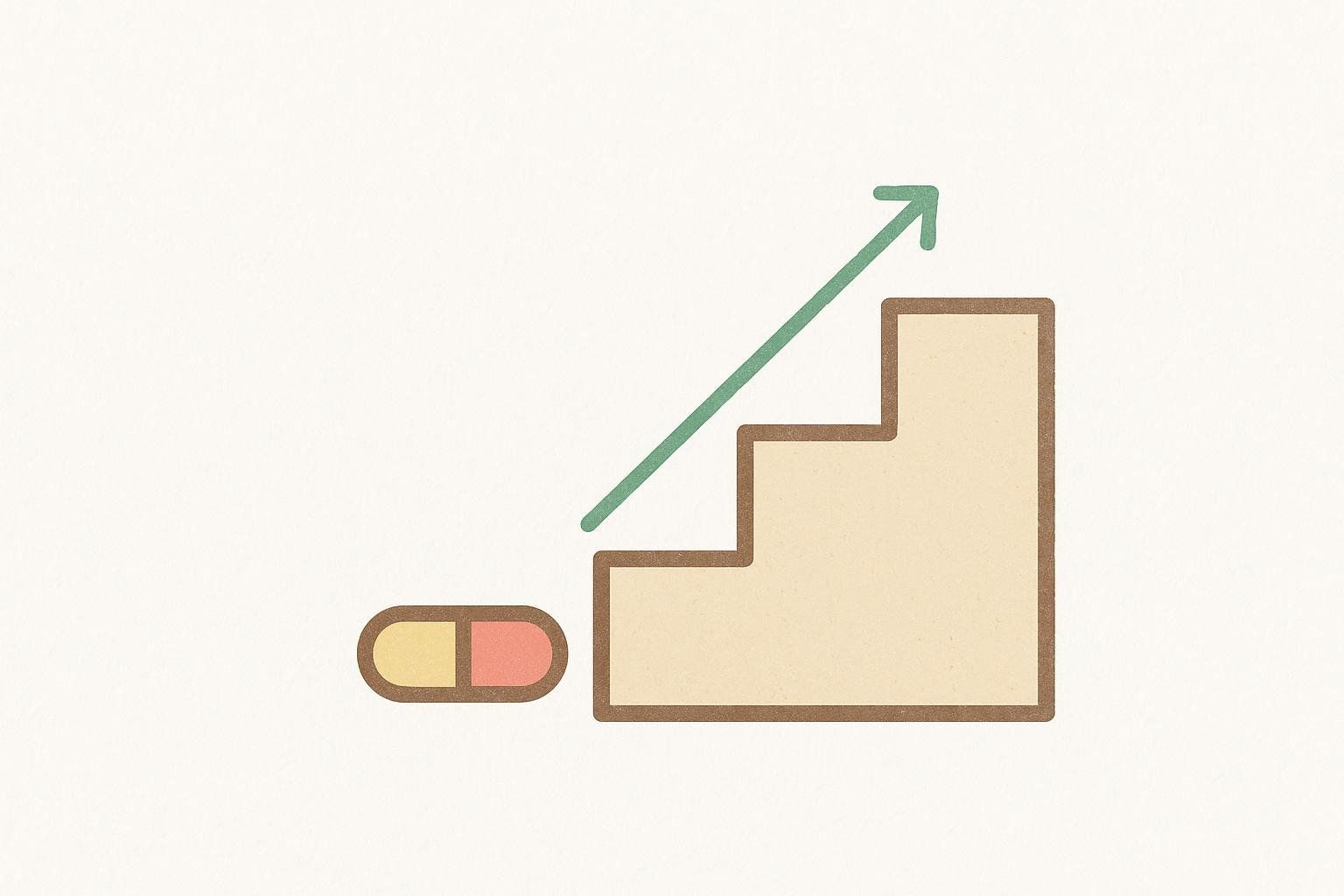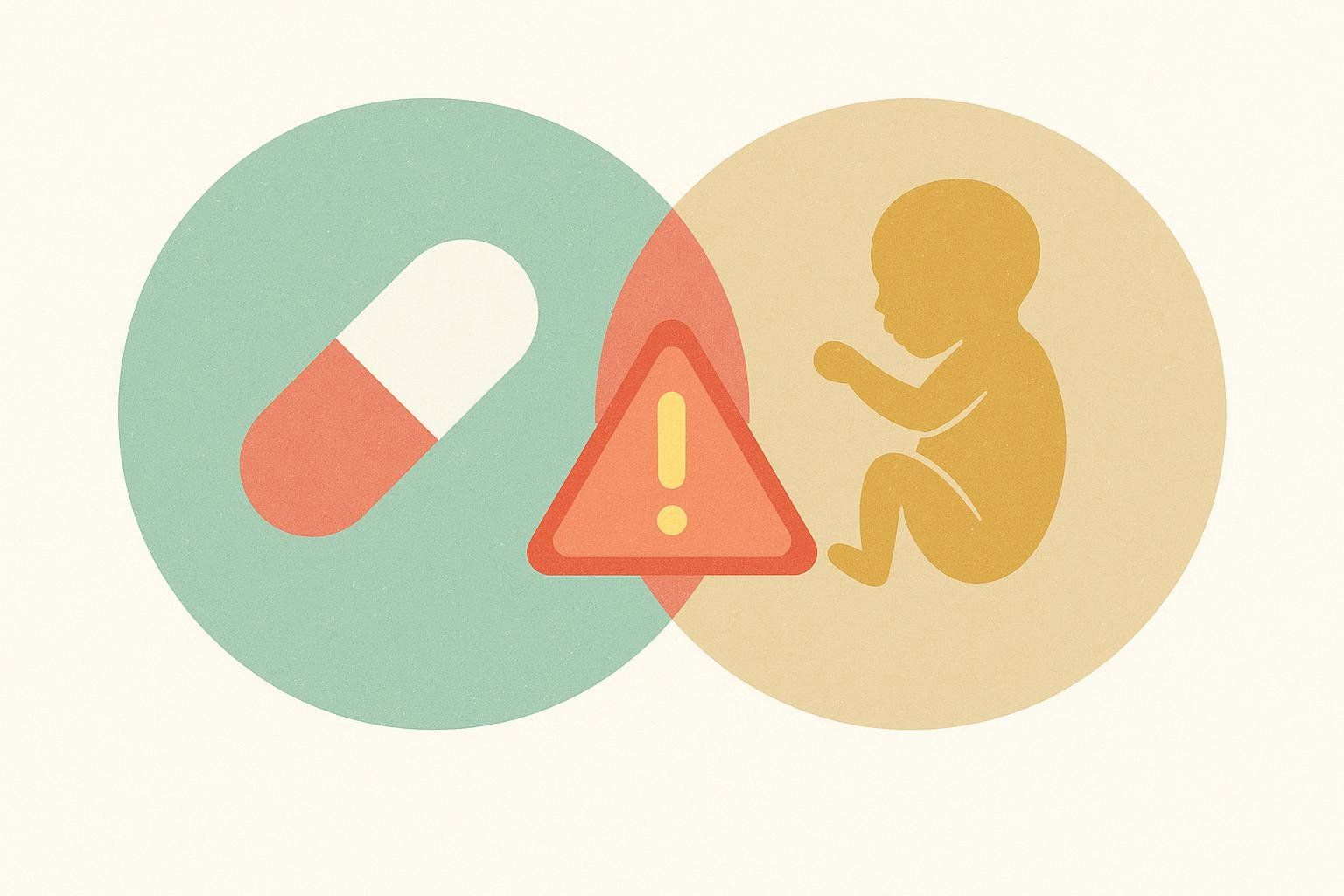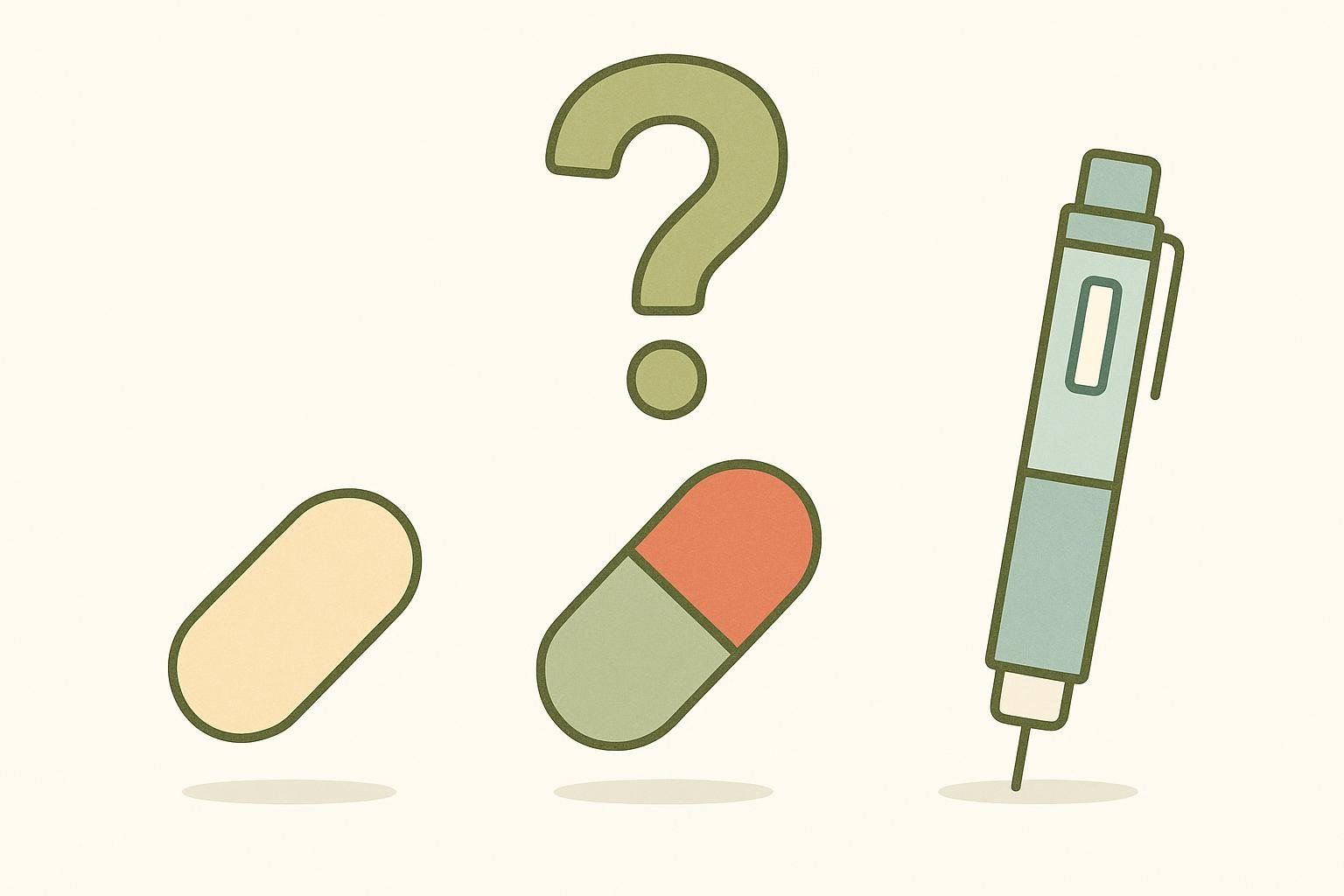Topiramate for Weight Loss: Dosing, Safety, and Evidence

Topiramate for Weight Loss: Dosing, Safety & Evidence
Topiramate (brand name Topamax) is an anti‑seizure and migraine‑prevention medication that can also curb appetite and support weight loss for some people. While topiramate by itself isn’t FDA‑approved for obesity treatment, clinicians sometimes prescribe it off‑label for weight management. By contrast, the fixed‑dose combination phentermine/topiramate (Qsymia) is FDA‑approved and has specific dosing steps plus a safety program (REMS) for pregnancy monitoring (Qsymia HCP guidance).
Disclaimer: Educational information only—not medical advice. Always work with your licensed clinician to decide if medication is appropriate and to set dosing and monitoring for your situation.
TL;DR
- Does topiramate help with weight loss? Often, yes. In randomized trials, people lost ~5% at 24 weeks and ~7–10% by ~1 year at higher doses, on average, compared with smaller losses on placebo (24‑week RCT; 60‑week RCT). Results vary by dose, time, and tolerance.
- Is it FDA‑approved for weight loss? No—topiramate alone is off‑label. The combo pill Qsymia (phentermine/topiramate ER) is FDA‑approved for chronic weight management and requires monthly pregnancy testing for those who can become pregnant (HCP site).
- Typical off‑label doses used by clinicians? Often 50–200 mg/day (titrated slowly) depending on response and side effects; plans are individualized.
- Top side effects to know: Tingling in fingers/toes, taste changes, “brain fog” or word‑finding difficulty, fatigue, and dizziness are common. Rare but serious risks include metabolic acidosis, kidney stones, and acute angle‑closure glaucoma (DailyMed label).
How topiramate may promote weight loss

Topiramate seems to work through a few pathways:
- Brain signaling & appetite: It boosts calming GABA signals and dampens certain glutamate signals. Translation: food can feel less rewarding, so it’s easier to eat less (narrative review).
- Carbonic anhydrase inhibition: This can change taste (think “soda tastes flat”) and curb appetite; it’s also linked to tingling and acidosis risk (DailyMed label).
- Metabolic benefits: Some studies show better triglycerides, cholesterol, fasting glucose, and insulin sensitivity—especially in people with type 2 diabetes (review; T2D RCT).
What the evidence shows
24‑week dose‑ranging RCT in adults with obesity (n=385)
Doses tested: 64, 96, 192, 384 mg/day (titrated)
Results: Placebo lost 2.6% body weight at 24 weeks. Topiramate groups lost 5.0% (64 mg/day), 4.8% (96 mg/day), and 6.3% (192–384 mg/day). More people hit ≥5% and ≥10% loss on topiramate than placebo (study).
Long‑term trial (60 weeks; n≈1,200)
Doses tested: 96, 192, 256 mg/day (titrated)
Results: At 60 weeks, placebo lost 1.7% vs 7.0% (96 mg), 9.1% (192 mg), and 9.7% (256 mg) on topiramate. Blood pressure and glycemic measures improved (study).
Adults with type 2 diabetes on metformin (24 weeks; n=646)
Doses tested: 96, 192 mg/day
Results: Placebo lost 1.7% vs 4.5% (96 mg) and 6.5% (192 mg) with topiramate. HbA1c fell 0.1% on placebo vs 0.4%–0.6% on topiramate; systolic blood pressure also decreased (study).
Binge‑eating disorder with obesity (14 weeks; flexible dose; median ~212 mg/day)
Results: Binge frequency decreased 94% on topiramate vs 46% on placebo; completers on topiramate lost ~5.9 kg (study).
Bottom line: On average, more time + higher dose → more weight loss, up to what a person can comfortably tolerate. Metabolic markers can improve too, especially in type 2 diabetes.
Potential off‑label dosing (how clinicians often approach it)
There’s no FDA‑approved schedule for weight loss with topiramate alone. To improve comfort and reduce “brain fog,” many clinicians adapt migraine/epilepsy titration principles:

- Start low: 25 mg nightly for 1 week
- Go slow: Increase by 25–50 mg/day each week as tolerated
- Common target range: 50–100 mg twice daily (100–200 mg/day), adjusted to your response and side effects
Slow titration and using the lowest effective dose can reduce tingling and cognitive complaints (cognition review; general dosing references for other indications: Mayo Clinic, Drugs.com dosage guide). Your clinician will individualize any plan.
Important: Don’t stop topiramate abruptly—it should be tapered to reduce seizure risk, even if you’re not taking it for seizures (DailyMed label).
Safety, contraindications, and smart monitoring

Topiramate has well‑characterized risks. Build a simple monitoring plan with your prescriber.
Major warnings/precautions (DailyMed label):
- Cognitive/mood effects: Trouble with focus, memory, and word‑finding; mood changes and rare suicidal ideation.
- Metabolic acidosis: Check serum bicarbonate at baseline and periodically.
- Kidney stones & heat issues: Hydrate well; caution with ketogenic diets and other carbonic anhydrase inhibitors.
- Eye emergencies: Acute myopia/angle‑closure glaucoma—seek urgent care for eye pain or vision changes.
- Fetal risk: Higher risk of oral clefts with first‑trimester exposure—use effective contraception and discuss pregnancy plans.
Pregnancy safety note: The FDA warns of increased oral‑cleft risk with early pregnancy exposure; consider alternatives and use reliable birth control if using topiramate (FDA communication).

Interactions & special situations (DailyMed label):
- Oral contraceptives: Estrogen‑containing pills may be less effective at higher topiramate doses—add a backup method.
- Valproate: Higher risk of hyperammonemia and hypothermia when combined.
- Kidney disease: Reduced clearance—dose adjustments may be needed.
- Other CNS depressants/carbonic anhydrase inhibitors: Additive side effects.
Common labs/check‑ins many clinicians use:
- Serum bicarbonate, electrolytes, and creatinine
- Weight, blood pressure, and a quick mood/sleep/“brain fog” check‑in
- Pregnancy testing if applicable, plus ongoing contraception counseling
Topiramate vs. Qsymia vs. GLP‑1s (quick compare)

- Topiramate (off‑label): Oral, generic (often lower cost). RCTs show meaningful average weight loss over 6–12 months; cognitive/tingling side effects and pregnancy precautions apply.
- Phentermine/topiramate ER (Qsymia): FDA‑approved, with clear titration and stopping rules plus REMS pregnancy monitoring (HCP dosing/monitoring). Network meta‑analyses often rank it among the most effective oral options (ICER review). For background on phentermine itself, see our guide to phentermine for weight loss.
- GLP‑1s (e.g., semaglutide): Generally the highest average efficacy in modern RCTs, but typically higher cost and more GI side effects (ICER review). For a deeper dive, read our guides to Qsymia and semaglutide (Ozempic).
Choosing among them comes down to your medical history, side‑effect preferences, budget, and access—best decided with your clinician.
Beyond the scale: track fat vs. muscle with DEXA
The scale can’t tell you what you’re losing. A DEXA body‑composition scan shows fat mass, lean mass, bone density, and an estimate of visceral fat—in minutes.
- Set a baseline before starting medication.
- Re‑scan every 8–12 weeks to confirm you’re losing fat (especially visceral fat) while preserving muscle—see our guide: DEXA for Visceral Fat: Accuracy, Cost & Results.
- Plan your pace with our Weight‑Loss Calculator by Date.
Ready to see real progress? Book a BodySpec DEXA scan for precise, repeatable data you can act on.
FAQs
How long until topiramate affects weight?
Meaningful differences vs. placebo often show up by 12–24 weeks, with larger average losses by ~60 weeks as tolerated (24‑week RCT; long‑term RCT).
Is 25–50 mg/day enough?
Some people feel appetite effects at low doses, but RCTs showed stronger average weight‑loss results at ~96–256 mg/day. Tolerance varies—work with your clinician (24‑week RCT; long‑term RCT).
Does topiramate help if I have binge‑eating disorder (BED)?
A 14‑week randomized trial in BED with obesity showed large reductions in binge frequency and clinically meaningful weight loss with topiramate vs placebo (study). Discuss options with a specialist.
What if I’m pregnant or may become pregnant?
Topiramate exposure early in pregnancy increases oral‑cleft risk. Discuss alternatives, use effective contraception, and do not stop medication abruptly without guidance (FDA communication).
Can I combine topiramate with other weight‑loss drugs?
Don’t mix meds without explicit medical guidance. The only FDA‑approved topiramate‑containing weight‑management product is Qsymia, which has its own titration, monitoring, and REMS (HCP site).
Educational content only; not medical advice. Consult a licensed clinician for diagnosis, treatment, and personalized monitoring.


